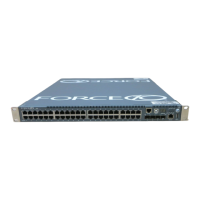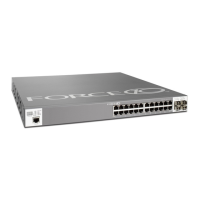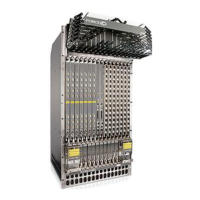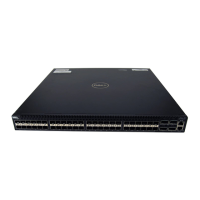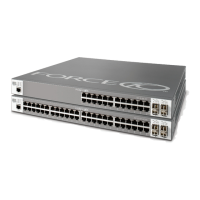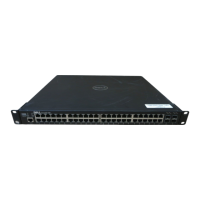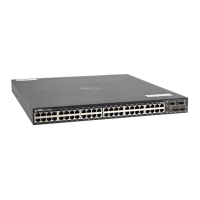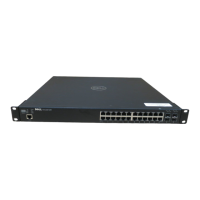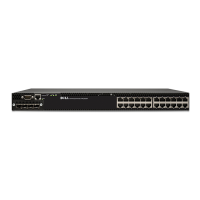886 | Spanning Tree Protocol (STP)
www.dell.com | support.dell.com
View only the root information using the show spanning-tree root command (see Figure 44-9) from EXEC
privilege mode.
Figure 44-9. show spanning-tree root Command Example
SNMP Traps for Root Elections and Topology Changes
• Enable SNMP traps for Spanning Tree state changes using the command snmp-server enable traps
stp.
• Enable SNMP traps for RSTP, MSTP, and PVST+ collectively using the command
snmp-server
enable traps xstp.
Configuring Spanning Trees as Hitless
Configuring Spanning Trees as Hitless is supported only on platforms: c e
You can configure Spanning Tree (STP), Rapid Spanning Tree (RSTP), Multiple Spanning Tree (MSTP),
and Per-Vlan Spanning Tree (PVST+) to be hitless (all or none must be configured as hitless). When
configured as hitless, critical protocol state information is synchronized between RPMs so that RPM
failover is seamless, and no topology change is triggered.
Configure all Spanning Tree types to be hitless using the command
redundancy protocol xstp from
CONFIGURATION mode, as shown in Figure 44-10.
Figure 44-10. Configuring all Spanning Tree Types to be Hitless
FTOS#show spanning-tree 0 root
Root ID Priority 32768, Address 0001.e80d.2462
We are the root of the spanning tree
Root Bridge hello time 2, max age 20, forward delay 15
FTOS#
FTOS(conf)#redundancy protocol xstp
FTOS#show running-config redundancy
!
redundancy protocol xstp
FTOS#
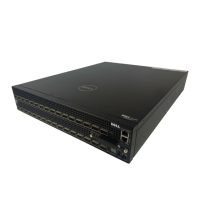
